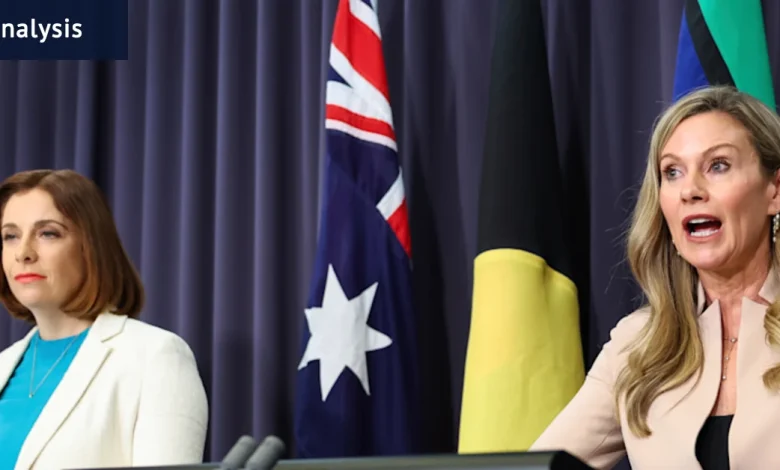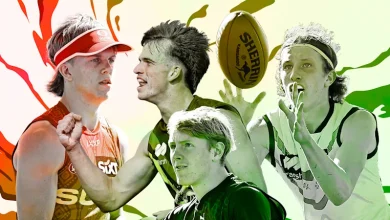Australia’s teen social media ban has a gaming-sized loophole

Gaming platforms are just social media in disguise
Roblox, Discord, and Twitch have virtually identical social features to the platforms being banned. Roblox offers direct messaging, friend networks, group spaces, user-generated content sharing, and customisable profiles, similar to Instagram or Facebook.
Discord provides servers (think Facebook Groups), DMs, voice chat, and community spaces organised by interest. Twitch combines live chat, whispers (private messages) and communities that mirror Twitter’s dynamics.
Children are being exposed to social media-style apps on Roblox, experts warn.Credit: Nathan Perri
The only meaningful difference is that these platforms wrap their social features around games or streams instead of photo feeds. But when children are spending hours on Roblox they’re not just playing, they’re socialising. Research shows over three-quarters of teens engage in online gaming with friends, with many using in-game chat and Discord as their primary communication channels.
The platforms Australia exempted aren’t hypothetical risks. Since 2018, at least 24 people have been arrested in the US for abducting or sexually abusing children groomed on Roblox. In 2023 alone, Roblox reported over 13,000 instances of child exploitation to authorities. AFP Commissioner Krissy Barrett specifically warned that “crimefluencers” are using Roblox to target vulnerable girls, while reporting by this masthead has revealed children exposed to child sexual abuse material and extremist content on the platform.
Roblox does have additional layers of protection compared to other platforms, including moderators that monitor real-time communication and parental controls that allow parents to block specific experiences or report people on their child’s friend list. The company says its AI detection system triggers real-time intervention within 15 to 60 seconds of a detected interaction that potentially violates its rules, and it does not allow images or videos to be shared via direct messaging.
Discord’s track record is also alarming. New Jersey’s Attorney General sued Discord in April 2025 for deceptive business practices that expose children to predators. The notorious 764 organisation operated on Discord for years, coercing children – some as young as 14 – into self-harm and worse, despite FBI warnings.
Twitch, meanwhile, has been riddled with child exploitation and grooming, but is “still being assessed” while Kick – its smaller competitor – has been included in the ban.
‘We can police the sharks’
Inman Grant says assessors have been using a hypothetical test: “If the online gameplay is the significant or sole purpose, if that were taken away, would the kids still use that messaging functionality to chat? Probably not,” she told journalists. But that logic sidesteps reality.
She says Roblox remains exempt because assessors decided kids wouldn’t use its chat features without the games – but that ignores the fact that predators are exploiting those exact features today.
Communications Minister Wells and eSafety Commissioner Inman Grant. The confusion over which platforms are banned and which get a free pass will do little to instil confidence in Australian families. Credit: Alex Ellinghausen
Inman Grant acknowledged the contradiction directly: “Exemption does not mean a platform is absolutely safe.” If safety isn’t the criteria, what are we actually protecting children from?
Rather than include Roblox in the ban, Inman Grant says she extracted voluntary commitments: making under-16 accounts private by default and preventing adult-teen contact without parental consent.
“We did initially threaten formal regulatory action and they said, no, we will work with you,” she explained on Wednesday.
It’s a compromise that undermines the ban’s entire premise, however. If voluntary measures from Roblox are sufficient protection, why are mandatory restrictions needed for Instagram? If Instagram’s voluntary measures aren’t sufficient, why are Roblox’s?
Communications Minister Anika Wells repeatedly framed the ban as creating “cultural change” rather than comprehensive protection. “We can’t control the ocean, we can police the sharks,” she said, while simultaneously exempting platforms where sharks are documented to be swimming.
The minister is right that the law should aim for a cultural shift. But culture changes when rules make sense. Explaining to a 15-year-old why Instagram is banned but Discord isn’t – when both offer DMs, communities, and social connection – requires mental gymnastics that Inman Grant and Wells have struggled to articulate.
Other jurisdictions have avoided this mess. The UK’s Online Safety Act regulates any “user-to-user service” regardless of claimed purpose, while the EU uses risk-based regulation capturing platforms by actual harm potential.
Instead, Australia has created legislation where Reddit – an anonymous forum – is banned while Discord, hosting similar communities with arguably less moderation, escapes. Kick, where a French streamer died on camera in August, makes the list. Twitch, its larger competitor with similar risks, remains under assessment.
At its core the list seems arbitrary at best, and wilfully ignorant if you consider how kids actually spend their time online.
Wells told journalists on Wednesday that the list isn’t final, with “room for movement” before December 10. But the confusion over which platforms are banned and which get a free pass will do little to instil confidence in Australian families that the ban has been properly thought through.
The federal government has had all year to work this stuff out.
Wells insists “there’s not a place for predatory algorithms, harmful content and toxic popularity meters manipulating Australian children.” She’s right. But those systems don’t suddenly become acceptable wrapped around a game instead of a photo grid.
With Nick Newling
This story has been updated with additional information about Roblox’s safety and moderation measures.
Get news and reviews on technology, gadgets and gaming in our Technology newsletter every Friday. Sign up here.





